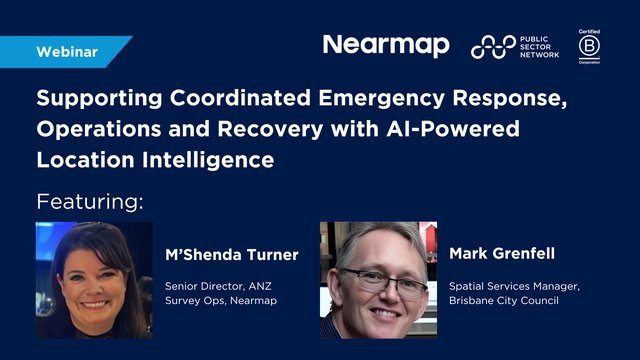

Living in small communities
Major cities and large towns the world over have access to opportunities and initiatives that smaller townships and communities can only dream about. Yet the people in the rural and remote communities still have the same aspirations and desires, and also generally know about the things that they don’t have access to. In our modern and connected world, it is imperative that there are equal opportunities irrespective of location or jurisdiction, and thus some of the municipalities in rural areas are some of the most active when it comes to working with and advancing technology for their communities. For instance, Pat Podoborozny, the Chief Administrative Officer (CAO) of the Town of Bruderheim in Alberta in Western Canada, says that we are only a town on 1,500 people but even with a population of that size, engaging with residents is a huge problem. Everyone communicates in different ways, though it is not entirely accurate to say that seniors aren’t engaged on digital platforms; many of them are very engaged. In fact, the 65 to 80 to year olds are very good on their iPads and their telephones. The problem is that whilst some of them are very good with technology, others are not good at all, and for the younger generation, they will not talk to anybody unless they can do it digitally or online. Moreover, they have very short attention spans, so if you don’t catch them in that first tagline or the first few sentences then you’ve lost them. So the problem for a council, especially a small one, is engaging with each cohort or group in their own way.
Part of the problem invariably is that the issues a council deals with stem from the top, and we have elected officials that are very old school in Western Canada. Digital age opportunities and developing an online presence are not a priority for them. So we need to find a way to educate them first. But before that can be achieved, Nathan Hyde, the CAO of the Town of Erin in Ontario, says that issues of connectivity also need to be addressed. We are surrounded by the Greater Toronto Area on multiple sides, yet a huge percentage of our population of 13,000 doesn’t have reliable internet coverage. This is a significant problem in an era where everybody wants access at their fingertips, and quick. The issue of connectivity also needs to be sorted because municipalities that aren’t fully e-commerce soon will miss out on providing services online. Not only is it a cost saving, but it is more efficient and a better service delivery offering than having residents drive in and speaking to somebody at the counter.
Funding implications
Apart from connectivity and technology issues, another big issue for small communities is funding. That is a perennial issue for all councils, but for small municipalities it is not just about the funding in the first place, but about continual funding. Nathan Hyde says that during election campaigns, this issue becomes particularly prevalent. Candidates often say there will be no tax increases. That’s a popular thing for them to say, but even the status quo requires investment, let alone additional funding for something we really need. This kind of rhetoric needs to be addressed for candidates and elected officials.
Meanwhile when it comes to public works projects, Pat Podoborozny says there’s often a lot of funding for capital projects but zero for maintenance. This is something that has particular ramifications for First Nations. They’re funded federally, and though there are grants for them to upgrade, there’s nothing for maintenance, and we all know in asset management, if you’re not maintaining, you’re basically letting things rot. So when there were wildfires recently, the province reached out to us to help, and of course we all just went in there and helped but there’s no way to recover money from the municipal levels. However, it is possible to make this model work for everyone. Currently the Town of Bruderheim is working with the City of Alberta to develop a public works program for First Nations. Since they are federally funded and we’re provincially funded, we’re using a matching model to maximize the grants. In other words, any money the municipality can provide or raise through a grant process, can be matched federally through regional collaboration. This may be a distinctive structure, and we have a unique relationship, but it works, especially for infrastructure upgrades and new programs.
In general however, funding is an issue that all councils battle with, and especially in rural areas where the implications of a lack of funding are more detrimental. For instance, for infrastructure planning, make sure to have enough money in your back pocket so that if funding changes, sometimes with just weeks of notice, there’s extra money somewhere to finish the project. Part of it is about knowing what other communities are doing. Nathan Hyde says that most small municipalities – like these two – are in some way connected to the larger provinces in their vicinity, so you need to align yourself with what the province is doing. This way you’ll know what government funding is available and you can build your plans and have the response networks in place to deal with funding or other concerns as they come up.
Addressing global issues locally
Some of these concerns may be about climate change. In larger communities, this has been a topic of conversation for years, but not a lot of action has been taken because for some people the ramifications still don’t feel real. In smaller and rural communities however, if they don’t take action then there will be serious consequences. For instance, Pat Podoborozny says that we need to deal with climate change resilience because we regularly go from dry conditions, to a fire season to extreme flooding. The extremes are getting worse and there is very little respite between incidents or catastrophes, so finding solutions is of paramount concern. The problem however is exacerbated by the fact that a lot of initiatives or practices in our community are adapted from the United States, and they don’t have the frost or other conditions that we have here in Canada. So we are trying to change that to be more aligned with the Canadian climate.
Nathan Hyde also says that there is great uncertainty when it comes to climate. We don’t know when the next flood, fire or tornado will strike, but worse than that, to deal with such uncertainty, municipalities generally don’t hire climate experts in permanent positions or to come in and work on long-term projects. There are consultants that occasionally come in, but to really address the issues of climate change at a local level requires local expertise. We need to embed climate resiliency into our policies, we need to create special climate documents and plans, and we actually need to put money behind it and invest in it. Instead, most councils use the federally funded FCM ‘Municipalities for Climate Innovation Program’[1], and whilst it is a great program for larger communities, it has six complicated steps, and as you move through those steps, even the larger municipalities tend to drop off. For smaller communities in particular, but maybe even for the larger ones, there needs to be a longer term commitment and a customized program because that is going to help solve a lot of our problems. It’s going to help save money and it’s also something that the residents want to see happen.
In the Town of Erin, climate change has been embedded into our documents, and thus it has been adopted by Council and is a central pillar in our strategic plan with money behind it. Everything is now viewed through the lens of climate change and climate resiliency. Meanwhile, in the Town Bruderheim, Pat Podoborozny says that they held a workshop in 2015 to talk about creating an action plan. This became their holistic approach, and like in Erin, all our capital planning is now based on it. Not only has it been beneficial for dealing with climate change, but it has become a plan for all types of inclusion. For instance, we didn’t have handicap accessible sidewalks, but with community consultation and a plan based on community voices, we are making sure that our infrastructure is disability resilient and climate resilient too. As part of that, they discovered that many people don’t have air conditioners in their homes, so when there are heat waves, we have cooling stations in our municipal buildings open to the public. Sometimes the simple things make a huge difference, and in small communities, it is not all about policies or resiliency. Sometimes it is about understanding your people, your environment, and making sure that you have programs in place that align with their goals and requirements.
“The big picture can be overwhelming, but thinking about what you can do at a local level can make a huge difference.” - By Pat Podoborozny, Chief Administrative Officer (CAO), Town of Bruderheim (Alberta)
For instance, we have campaigns to encourage people to turn the lights off and install LEDs. These are small measures that may feel even smaller in rural communities, but they have a massive impact. A lot of our decision makers don’t realize that there is no break anymore between flood and fire seasons. There used to be four seasons; now we have two. There is little time to prepare so anything that the community can do to assist is appreciated, and it’s in our infrastructure plan too. We are educating our planners as well as our community to ensure that they all think about climate.
Trusting the people and the data
In many ways, addressing the issues of climate change is in the same field as emergency planning and disaster mitigation. Ultimately both are about relationships and planning, and really it all comes down to trust. People in the community don’t necessarily care about strategic plans or scenario planning. They care about keeping the price of their utilities down and getting something from council. It’s personal. So if we can get them to trust us and understand how we spend their tax dollars and why, that may have an engaging impact. If trust can be built and earned, then the people can become our silent cheerleaders in the community. Sometimes the elected officials may not understand the issues or be impacted as much by them, but these cheerleaders can push the issues and programs in a way that no employee or other official can. We need to show our community that we can be trusted.
Nathan Hyde says that when it comes to relationships, it is important to keep in mind that indigenous groups are getting requests from all the different municipalities at the same time. So it is important to be discerning and to consult with them only when required. They also have differing opinions on some issues, so building relationships is extremely important. At the same time, it is equally important to build relationships with other stakeholders too. In general, most people are afraid of change, and unless you message properly what change looks like, it will remain a big unknown and therefore a challenge.
“For all communities, success is all about the explanations and the messaging, and having a meaningful dialogue. It’s our responsibility to engage with them and help them understand.” - By Nathan Hyde, Chief Administrative Officer (CAO), Town of Erin (Ontario)
Part of the way of helping people to understand is by building trust, and another way is with data. We can’t make great decisions unless we have the appropriate data, and so we’re trying to get that as much as possible. In a way, data comes back to connectivity and e-commerce, but it is also about community engagement in other ways. We’re still far behind in that regard but we’re moving in the right direction. With better data, we’ll make better decisions which also impacts trust.
Pat Podoborozny says that there are many good data tools available, but many of them are expensive and there is no funding for that. So we work with regional partners and purchase the software together. Ultimately, like most things, it is about collaboration, trust, and working together for the benefit of our communities, no matter how big or small they are.
Featured speakers:
- Pat Podoborozny, Chief Administrative Officer (CAO), Town of Bruderheim (Alberta)
- Nathan Hyde, Chief Administrative Officer (CAO), Town of Erin (Ontario)
Interested in more insights about smart city? Check out our upcoming Future Cities Roadshow


































